


April 28, 2019
SUSAN TATTERSHALL
–––––––––––––––––––––––––––
Historic Organ Restoration in the Americas
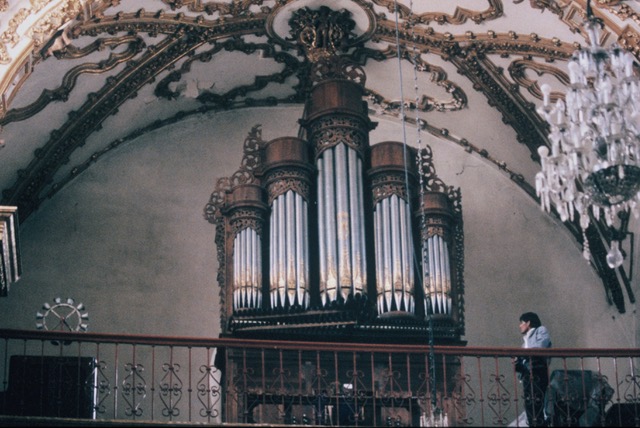
April 28, 2019
SUSAN TATTERSHALL
–––––––––––––––––––––––––––
Historic Organ Restoration in the Americas

The c. 1830 Castro organ at the Basilica de Nuestra Señora de Ocotlán in Tlaxcala, Mexico and restorer Susan Tattershall.
The c. 1830 Castro organ at the Basilica de Nuestra Señora de Ocotlán in Tlaxcala, Mexico and restorer Susan Tattershall.
Introduction
Susan Tattershall, who has performed some of the most important restorations of historic organs in Mexico, Bolivia, the West Indies, and the United States, and conducted major documentation studies worldwide, discusses her work in this interview with Vox Humana Editor Christopher Holman.
––––––––––––––––––––––––
Susi, thank you very much for agreeing to this interview. You have restored many important organs in the United States, Europe, Mexico, Bolivia, and the West Indies. How did you become interested in organbuilding, and what led you to restore historic instruments all over the world?
When I was about 15 my dad was head of an organ committee for our church, and they bought an electric-action pipe organ from Gabriel Kney. I used to go over there after school and watch them install the instrument, and I thought it was the coolest thing in the world. Our organist was Jim Wyly, who wrote an important dissertation on early Spanish organ building. While I was taking free lessons from Jim (so I could substitute for him at church), he would show me these incredible photos of early organs that he'd taken while traipsing around Spain on a Fulbright before anyone really cared about the old organs there.
After I graduated college with a degree in religious studies, I wrote Gabriel Kney and asked if he would take me as an apprentice. And he said no. But about three months later, he wrote me and said that his wife and secretary had been giving him such a hard time about turning me down, that I could come on a trial basis for three months. It was an interesting challenge, and he even eventually thought I was actually a good investment, and so I stayed there for about two years.
If I had a nickel for every time over the following eight years I was denied a job because "girls can't do that", "my wife/my workers can’t handle that"... Eventually I got an opportunity to move to Switzerland, which I did; but it turned out to be impossible to get proper migration papers after I arrived. So I lived in Romainmôtier, Switzerland and worked for a cabinetmaker who just paid me in cash. At that time there were only 207 people in the village, and the government representative of a small town like that was the postman, so of course I was very nice to him and made him cookies at every opportunity so he wouldn’t report me. The experience of working with the cabinetmaker there taught me an immense deal about woodworking, which all came in handy with organ restoration later.
How did you become interested in historic Spanish organs at a time when most historic instruments on the Iberian Peninsula were still unplayable?
I became friends with a French organbuilder living in Geneva called George Lhôte, who invited me to come to Spain and help document an organ for which they wanted to seek government funding to start a restoration in Montblanch, Tarragona. Under the auspices of another organbuilder, Gabriel Blancafort, I took the job and fell in love with Spanish organs for a second time. At that time most historic Spanish organs didn't play, but we were able to get some noises out of a few.
I think one of the things that attracted me is that I'm basically a very simple person, and the aesthetics of an organ with very little in the way of pedals, two manuals (at absolute most), and with a divided compass [on most Spanish organs built before the nineteenth century, most stops have two knobs: one for the treble, one for the bass] was always attractive. Being able to produce all these incredible sound combinations — we didn't need a 65-note keyboard, 7 keyboards, or 100 stops —was a wonderful economy of materials and design that just drew me in.
I loved doing documentation projects, and that one was a wonderful experience — I basically lived inside the organ and produced the handwritten technical drawings of the pipes, mechanics, etc. Afterward Gabriel Blancafort offered me a job to work on the restoration for which we had done all that preparation work. Unfortunately, the project was not funded at that time, so I ended up working in his shop on a small convent organ from the early eighteenth century. Eventually those jobs dried up, and then it was back to the "my wife's not happy with my having a girl in the shop" and so on. I then moved to Italy and worked with Bartolomeo Formentelli for about a year, and then after that for a year and a half at Rieger in Austria.
After such an enriching experience working with organs all over Europe, what was it like returning to the United States?
As soon as I returned, Pieter Visser invited me to come to the American Pipe Organ Builders of America Conference and take the master organbuilder exam. I passed with flying colors on all the parts of the test that had to do with actual organbuilding, but — despite having had all that experience with restoring historic organs all over Europe — I actually flunked the history part! And it was because the exam only focused on American organ building (and of course at that time I had no idea who Henry Erben was!). And I'd even studied up on electricity because I also didn't know anything about that!
I had met the organbuilder Rubin Frels at that convention, who had been invited by the Mexican government to do a survey of Mexican organs, possibly with the goal of restoring some of them. So we went on this absolute horror ride into Mexico in his old diesel Mercedes and did some documentation and together wrote the report for the Mexican government.
Afterward he then invited me to work on an instrument built in Switzerland and brought to Texas around 1850 that he’d bought years ago for $25, while we waited for the Mexican bureaucracy to decide whether we would get a restoration contract. We called it the Raisin organ [after the town of Raisin, Texas, where it had sat in ruin]. I was there for about nine months. Every single tone channel in the channel boards and windchest itself was full of incredibly dense nests of mud daubers [a kind of wasp]. There was so much damage to the metal pipes that we eventually had to cut them open at the languid and then extend them in the top — which is a lot of work and obviously isn't great for the pipework — but it does less damage than just giving up, throwing them out, and sticking in a new pipe instead. Despite all the incredible mess, the organ turned out quite well, and is now in Round Top, Texas [near Austin].
During that nine-month restoration of the Raisin organ, the Mexican government dragged its feet and finally they said that they wanted to work with someone else. Well, one of the people that Rubin and I met along the way in Mexico was a certain Padre Bruno, who was a priest (though a bit of a wild one) in Tlaxcala, Mexico. He wrote to me after I had moved back to Chicago and said that he had started a choir school for a convent of nuns that he oversaw, and that there was a historic organ in the village church that needed restoration. He told me that he couldn't pay me, but the material of the instrument was all intact, and that if I wanted to come down, I could live there and they would treat and feed me well, and that we'd all have a really good time. I had just gotten married, so we drove down to Tlaxcala to work free. And of course there was a decent amount of pipework missing. So Padre Bruno drove up to Rubin's and hit him up for some free pipes. We put the organ back together in the village of La Magdalena Tlaltelulco, which was my first real job in Mexico.
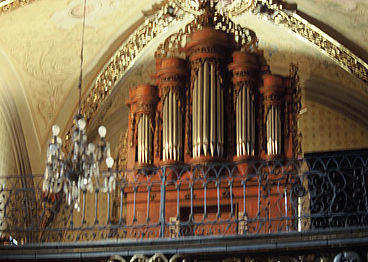
The organ turned out very nicely, though we did move it from its original position against the wall of the loft, but that's because Padre Bruno wanted people to see it, and make sure that everyone actually would know that the instrument is there and would care about it. Since the instrument was one manual with seven ranks, it was able to be moved with no alterations. I don’t like changing such a fundamental thing about an organ as its placement in the church, but as the first restoration in the area, Padre Bruno’s logic made sense to me, and had the desired effect.

How has that sort of response affected what you do as a restorer?
The thrill of bringing something back to life is what got me into the whole restoration idea to begin with — people would say to me "I remember my parents talking about the sound of the organ when they got married", or "I heard the organ at my first communion; now I'm 80 years old and I haven't heard it since." And it impressed me the extent to which the organ was part of a community. You can't treat it as an object outside of the community where it resides and was appreciated. It's people's and community's memories — it's a living member of a spiritual and social community that deserves to be treated with that in mind. It was just a thrill to have been able to do that.
How has all that affected your outlook and philosophy of restoration?
I always start with "do no harm" and "change nothing" as much as possible. Even if the old stuff doesn't work as well as what we can do now, keep it anyway. For instance, in the case of wooden pipes that have had some sort of pest damage, that means filling in holes with tiny little pieces of wood to try and preserve the existing part as much as possible.
Recognizing the organ as a piece of the community is also essential. I've gotten criticism for it, but I developed ways to work with an instrument on site, using members of the community as helpers, partly because in Mexico, the laws are such that you're not supposed to take an organ off site (some recent restorations have seen this rule relaxed, thankfully). At first that all developed because we were really stuck with it, but luckily many organs that get restored have most of their original parts. In remote places, often it's a matter of washing and straightening up some things. Because the nature of the pipe design itself was such that everything was so straightforward and elegantly simple — no oddly-shaped mouths or bizarre shapes (maybe a chimney flute here and there) — we just have to ensure the mouth is straight, make sure the pipes don't overblow, and try to get the nicest, fullest sound at the appropriate wind pressure (which is often straightforward because most Mexican organs still have their original weight stones).
One of the most impressive things about your work is that you often involve the local communities. How do you find people willing to help?
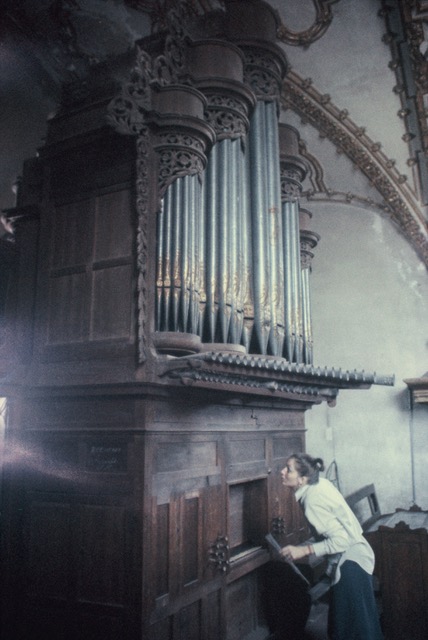
In Apetatitlan, Tlaxcala, there were these three guys who went around the village collecting money for the organ (everyone called them the "tres Marias"). One of them fixed cars for a living, so I asked if he could help clean some pipes, and of course he said yes. I just made sure to explain that what he'd be working with is an organ pipe, not a muffler, and to be careful. And of course, they get it. In another situation, I was restoring an organ in the West Indies and the priest just pulled 14 guys off the streets to help (being a former British colony, they spoke pidgin English — I never understood a word of it).

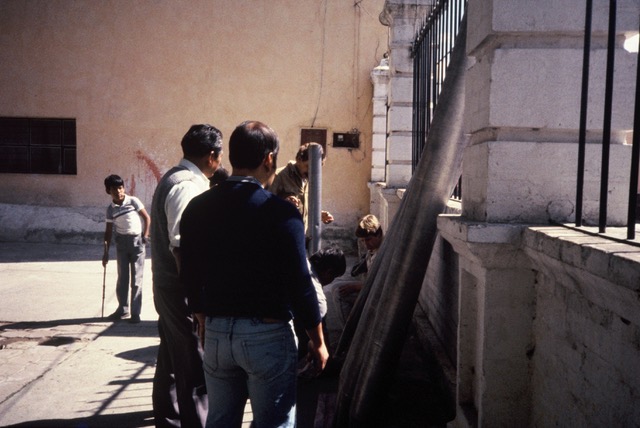
But one difficulty is that there are usually lots of kids hanging around all this work, and they can be a real pain because they'll play with your tools and run around all the time, etc. Eventually I gave them the option to either scram or help me, and many were excited to take part. And as you get people involved and they go home and tell everyone they know about it, all of a sudden the whole community knows what's going on. And more importantly, they want to help and will eventually learn basically how an organ is put together and the skill and work that goes into fixing it. Then they're much more likely to protect and appreciate it, rather than some unknown force swooping in and carrying off the organ and it magically returns good as new — there's just not the same attachment or "buy-in."
Given all that, it sounds like this kind of work in Central America is quite different than Europe or the United States?

As an example, I was contacted by the Basilica in Octolán if I would restore their organ, which was a large Castro instrument with two façades. Because the Basilica was a major pilgrimage site, people would come from miles, often walking on their knees, singing all kinds of songs at the top of their lungs. That's incredible, but when you're trying to voice an organ and yet another dozen more pilgrims walk in with and start up with their guitars and flutes and singing, it gets tiring! When working in Mexican villages, you cannot count on silence or the sacristan having the main church door (or the organ loft door) open for you, or on the same living conditions that we take for granted (like having hot water for a shower — in Ocotlán we eventually figured out when the sunlight would hit the water pipes, to get a warm shower, but it still was unpleasant).
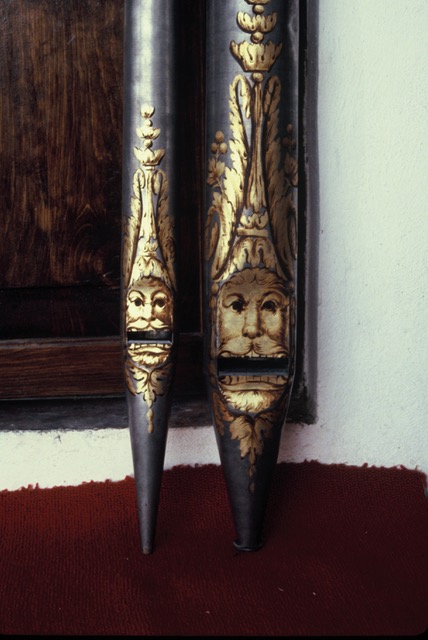
The people are incredibly generous, but they also sometimes have a different idea of what's appropriate at work. For instance, in the West Indies, Father Richard would come in at 10:30 in the morning with a tankard of ginger ale mixed with beer and try and give it to me.
Living conditions in La Magdalena, Tlaxcala were great, but in Ocotlán it was more difficult because the convent had closed, there was no money, and the only things to eat were three-day old tortillas and beans — and I was eight and a half months pregnant by the end of the project — HUNGRY! We finished the organ, and it was very heartening to see that it meant something to people. But then there was a big fight between the bishops and the priests of the Basilica about me being paid, because the bishop wanted the organ restored and the priests didn't (church politics there were unbelievable). By the time we finally were paid, the economy crashed and suddenly this pile of Mexican pesos was worth nothing in the United States. So we started asking around, and we heard a rumor that there was a black market at the airport for exchanging currency. We drove up as fast as we could and cleaned everybody out of their dollars, but even so we still had a lot of pesos. So we just decided to buy some exquisite Talavera pottery and feel good about the work we did.
Many of the organs you have restored or are currently working on are in extreme climate zones that are quite different from Europe. How does this affect your work?

The humidity levels of cities in the area of Tlaxcala, Mexico City, and Peubla on the Altiplano are constant enough throughout the year that it's no more extreme than a church in Massachusetts that lives with heating in the winter and high humidity in the summer. But the prevalence of insects is a serious problem. The side of an organ we restored in Mexico City was so eaten that it looked like a spider web. We had to fumigate each part of the organ, and a year later the insects came back, but this time in the floor. It's dangerous work — the stuff to kill the bugs is so poisonous that one breath of it will knock you out cold.
In Santiago, Bolivia, we fumigated an organ, and three months after I left, the termites had completely eaten the pedal chest and half the wooden pedal pipes. And that's with people supposedly paying attention. I've put some organs there on platforms made of specifically insect-repellant materials and they have fared well so far.
Same in the West Indies — we restored an organ on the Isle of Saint Vincent whose case was solid mahogany, so no problem with the bugs. But at some point someone had built a pedal chest out of pine, and it was so eaten that only the outline was left. [The organ historian] Barbara Owen and I found another organ in that area whose old horizontal swell shades had fallen in and crushed much of the pipework because the two scathes that held the axles up were made of pine while everything else was mahogany.
One problem in Europe that I have never seen in Mexico or other similar climates is tin pest. For pipes made in Mexico, the metal would often have been cooled on a linen sheet, or sand. Georges Lhôte taught me the old Italian builders knew that one of the ways to get rid of tin pest was to set the sheets of newly-cast pipe metal on the beach and let the sun beat on them. I sort of doubt that's the case, though, as I saw a lot of tin pest in Spain.
Having studied many Iberian organs, how would you say they differ from instruments in New Spain?
What I thought was interesting, is that while it was very similar to the instruments in Spain, there was somehow a more open throated-ness to it, with a little more fundamental in the sound — something just a little more frank. Additionally, organs built in the nineteenth century still followed that Spanish principle of having different, lower, pitches in the right hand from different pitches in the left hand. And that was fascinating to me, because even before then in Europe that had begun to go away.
What do you think is the future of the organ in Central America? Can we hope for more restorations?
The elephant in the room whenever I began a project in Mexico was money, expertise, money, follow-up, time, and money. There is a current idea in restoration theory which believes that the original organ should not be touched; rather, one documents it and builds a copy. While museums likely can do this, the expense of doing so is prohibitive in Mexico. I believe in documentation, obviously, as I wouldn’t have managed the documentation project in Oaxaca if I didn’t. At the time Cicely Winter [organ anthropologist and Director of the Instituto de Órganos Históricos de Oaxaca — see her interview on Vox Humana here] had decided to set up a database, we had no clue what we were getting into, in terms of the meaning of variations in building details and differences in specifications. I put a lot of hours into just designing what we should measure, making sure of the technical terms in Spanish, and then going to clean organ lofts and measure and photograph the darned things in rapturous detail, while she made sure that the village authorities were involved and informed. We often then modified or added fields to the database. There were a couple of objectives: figure out which organs might be worth restoring and protecting those which were not. As a long shot, we hoped that between measurements and the approximately 250 photos we took of each instrument, if one were destroyed, theoretically we could build a copy!
Also, we have more organists than well-paying jobs here in the United States. But in Mexico there are more playable organs than people to play them. And if there is pay at all, it’s not much. The tradition of organ building and organ playing in Mexico sort of broke after the Revolution of the early twentieth century. So many of the organs I worked on had clearly received good care, even some alterations, in the nineteenth century, but upkeep broke down after 1912. The sheepskins wore out on the bellows, and if pipes were stolen or damaged, they were not replaced. Insect or bat or squirrel or mouse invasions were not reversed. I don’t know why that was — when you think of the destruction of Germany in World War II and right after, the organbuilders got busy and reconstructed. Gabriel Kney, my first teacher, told me amazing stories of rebuilding organs in South Germany after the war when he was a 14- or 15-year-old apprentice, and the shop being paid in shoes, wine, or whatever the village with the organ specialized in. The organbuilder then had to manage selling the shoes or wine to get money.
But somehow the tradition in Mexico didn’t survive (mind you, Vatican II didn’t help things!). It was a frequent topic of conversation with Mexican and ex-pat friends there: perhaps the conquista didn’t “stick”. Perhaps Mexico never really got colonized, and many of the elements of Spanish culture are just going to disappear over time, the organ being one. And then there was the Hammond organ, or later, a Rogers, or now the Mexican favorite, Johannus, which were cheap and made a big organ-ish sound. And anyway, there was no one around who knew how to fix the pipe organ.
What projects are coming up next for you?
Now that I'm retired, I'm going to continue my work in Bolivia with a new documentation project. I'll also go back to Oaxaca to check on the organs I have restored there. I also have drawers and drawers of information that I will be publishing — nothing that will make a big splash, but just so that the material is available. I actually have an Indian harmonium that I've taken apart and now want to restore. After that, I’ll be restoring a two rank German pipe organ (wooden pipes) from around 1800 that I own.
List of Restorations by Susan Tattershall
Organ Restorations in the United States
Swiss (Toggenberg) chamber organ, c. 1855, private collection
English chamber organ, c. 1860, private collection
Redstone chamber organ, 1811, Trinity Episcopal Church, Geneva NY
Thomas Hall Chamber organ, 1824, Vassar College, Poughkeepsie, NY
E. and G.G. Hook organ, c. 1860, St. Mark’s Episcopal Church, Huntersville, NC
New York chamber organ, c. 1830, Schubert Club, St. Paul, MN
Organ Restorations in Mexico
La Magdalena, Tlatelulco, Tlaxcala, c. 1735, Castro family
La Basílica de Nuestra Señora de Ocotlán,Tlaxcala, c. 1830, modified in 1870 (Seferino Castro and Miguel Gregorio Castro)
Santa Anita Huiloac, Tlaxcala, 1714, Bernardo Rodriguez
San Luis Huamantla, Tlaxcala, 1755, Josep Rodriguez
El Santuario, Huamantla, Tlaxcala, c. 1760
La Iglesia de Padre Jesus, San Pablo Apetatitlan, 1830, Seferino Castro
La Iglesia de San Jerónimo, 1726, Tlacochahuaya, Oaxaca
La Capilla de las Vizcainas, México, 1834, Francisco Perez de Lara
El Museo del Virreinato, Tepozotlán, México State, 1749 Gregorio Casela
La Catedral de Oaxaca, reconstruction of 1690 organ
Santa María Tamazulapan, Oaxaca, c. 1700
San Andres Zautla, Oaxaca, c. 1726
For further information on Susan Tattershall's ongoing restoration projects in Bolivia, read her blog. To learn more about organs in Oaxaca that Susan Tattershall has restored, see our previous articles with Cicely Winter.
The views and opinions expressed in this article are those of the author, and do not necessarily reflect the position of Vox Humana.